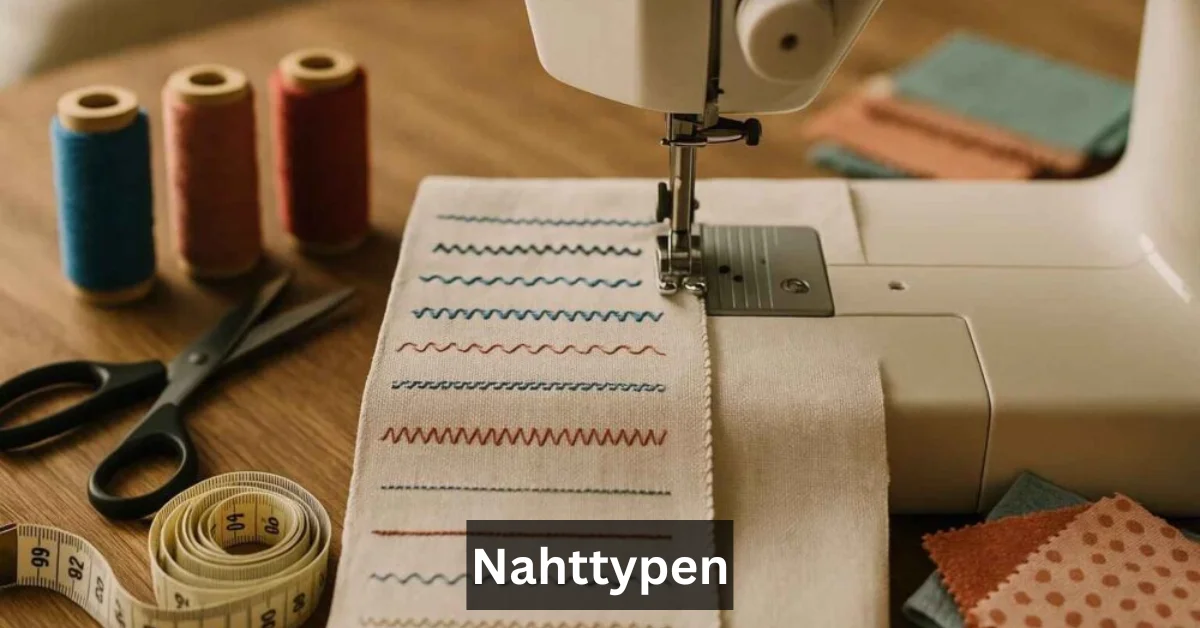When learning about sewing, one of the most important concepts you’ll come across is Nahttypen, which is the German word for “types of seams.” Seams are at the heart of sewing because they connect different pieces of fabric and turn them into functional garments, home décor, or accessories. Whether you are a beginner trying to master your first project or an experienced seamstress aiming for professional-quality finishes, understanding nahttypen can make all the difference in your final result.
Think of seams as the backbone of a garment. Without them, fabric pieces would simply remain separate, unable to hold their shape or withstand use. But not all seams are created equal—different nahttypen serve different purposes, depending on the fabric, the style of the garment, and the durability required. In this article, we’ll dive into the world of seams, exploring the most common types, their uses, and tips for sewing them effectively.
What Are Nahttypen?
Nahttypen, simply put, are the various methods of joining two or more pieces of fabric together. While the English term “types of seams” conveys the same meaning, using the German word highlights how universal sewing is across cultures. A seam is created by stitching fabric pieces along their edges, but how you finish and reinforce that seam determines its strength, appearance, and suitability for different projects.
Some seams are purely functional, while others are decorative. Some are meant to hide raw fabric edges, while others are designed to lay flat against the skin for comfort. Each type has its role, and once you understand the characteristics of different nahttypen, you’ll be able to choose the right one for your sewing project.
Why Are Seams So Important?
It’s easy to underestimate seams if you’re new to sewing. You might think they are just a line of stitching, but in reality, they do far more:
- Provide structure and strength: Seams hold the fabric together, preventing it from fraying or falling apart.
- Affect the garment’s appearance: The type of seam chosen impacts how neat and professional your project looks.
- Ensure comfort: A bulky seam might irritate the skin, while a flat seam can make a garment more pleasant to wear.
- Add design features: Some seams are visible on purpose, adding an extra decorative element to the fabric.
Understanding these points makes it clear why knowing different nahttypen is essential for anyone serious about sewing.
Common Types of Nahttypen
Now, let’s explore the most widely used nahttypen. Each has its unique strengths and ideal applications.
1. Plain Seam (Geradstichnaht)
This is the simplest and most common seam type. A plain seam involves placing two fabric pieces right sides together and sewing a straight line along the edge. It is quick to sew and forms the foundation of most garments.
Plain seams are best for woven fabrics and everyday clothing. To keep the edges from fraying, you may need to finish them with pinking shears, zigzag stitching, or a serger. While plain seams may look basic, they are highly versatile and used in almost every project.
2. French Seam (Französische Naht)
A French seam is known for its clean, elegant finish. It hides raw edges within the seam itself, making it ideal for delicate fabrics like silk, chiffon, or voile. To create it, you first sew the fabric with wrong sides together, then fold it and sew again with right sides together.
The result is a neat seam with no visible raw edges. French seams are perfect for garments like blouses or dresses, where the inside finish matters just as much as the outside.
3. Flat-Felled Seam (Doppelte Kappnaht)
The flat-felled seam is extremely strong and durable, commonly seen in jeans and workwear. To make this seam, you fold one fabric edge over the other and stitch it flat, encasing the raw edge. This creates a seam that is both sturdy and flat against the body.
Because of its strength, the flat-felled seam is ideal for heavy-duty fabrics like denim, canvas, or uniforms. It also has a clean look on both sides, making it popular in sportswear and garments where both sides may be visible.
4. Overlocked or Serged Seam (Overlocknaht)
If you own a serger or overlock machine, you’re probably familiar with this seam type. An overlocked seam trims the fabric edge while encasing it with thread, preventing fraying. It’s a fast and efficient way to finish seams, especially for knit fabrics.
Overlocked seams are stretchy, making them perfect for T-shirts, leggings, and sportswear. They may not be the most decorative, but they are practical and widely used in mass garment production.
5. Bound Seam (Eingefasste Naht)
A bound seam involves covering the raw edge of the fabric with bias tape or another strip of fabric. This method not only prevents fraying but also adds a decorative touch inside the garment.
Bound seams are often used in unlined jackets, coats, and high-quality garments where the interior needs to look polished. It’s a bit more time-consuming but worth the effort for garments meant to impress.
6. Lapped Seam (Überlappungsnaht)
Instead of placing fabrics right sides together, a lapped seam overlaps one fabric edge over the other and then stitches them together. This seam is flat and strong, making it suitable for leather, vinyl, or fabrics that don’t fray.
Lapped seams are often seen in outerwear, raincoats, or decorative projects where bulk is undesirable. They also add a unique design detail compared to standard seams.
7. Decorative Seams (Ziernähte)
Not all seams are purely functional—some are designed to be seen. Decorative seams use special stitching techniques or contrasting thread to enhance the garment’s style. Topstitching and twin-needle seams fall into this category.
These seams are perfect for making a design statement on visible areas like collars, hems, or yokes. While they may not always add strength, they significantly contribute to the garment’s aesthetic.
Choosing the Right Nahttypen
With so many options, how do you decide which seam to use? Here are a few considerations:
- Fabric type: Lightweight fabrics benefit from French seams, while heavy fabrics need flat-felled seams.
- Purpose of the garment: Everyday clothes might only need plain seams, but workwear demands stronger finishes.
- Aesthetic goals: If you want the inside to look as polished as the outside, bound or French seams are ideal.
- Comfort: For activewear or underwear, flat and soft seams prevent irritation.
By thinking about the fabric, function, and finish, you can match the seam type to your project’s needs.
Tips for Sewing Seams Successfully
Knowing the theory is one thing, but applying it in practice is another. Here are some tips to improve your seam work:
- Press as you go: Always press seams flat with an iron after stitching. This not only makes the garment look better but also sets the stitches.
- Use the right thread and needle: Heavy fabrics need stronger thread and needles, while lightweight fabrics benefit from finer tools.
- Test on scraps: Before sewing the actual garment, test the seam on a small fabric scrap to check tension and stitch quality.
- Trim and grade seams: Reducing bulk by trimming seam allowances makes garments more comfortable and professional-looking.
- Stay patient: Some seams, like French or bound seams, take longer to sew. The extra effort often pays off in durability and aesthetics.
Modern Approaches to Nahttypen
While traditional seam types remain essential, modern sewing machines and tools have introduced new variations. Overlock machines, coverstitch machines, and even computerized decorative stitching expand the possibilities for seam finishes. Today’s sewists can experiment more than ever, blending function with creativity.
Final Thoughts on Nahttypen
Nahttypen, or types of seams, are the foundation of sewing. From the simplicity of a plain seam to the elegance of a French seam or the strength of a flat-felled seam, each one has its own role. By understanding the different nahttypen, you can elevate your sewing skills, produce garments that last longer, and create projects that look polished both inside and out.
Seams may seem like small details, but they carry a huge responsibility. They hold everything together, define the garment’s structure, and often determine whether your project looks homemade or professional. The more you practice different nahttypen, the more confident you’ll become in your sewing journey.



